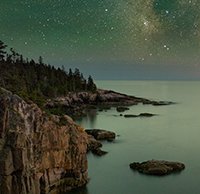Advancing technology means that you shouldn’t worry about your ISO being too high
posted Thursday, December 3, 2015 at 3:49 PM EDT

Jim Hamel has written an article for Digital Photography School that provides 6 Tips for Using ISO Effectively With Your Camera.
With ISO being called the third corner of the exposure triangle, Hamel wonders if it really was that integral in the film days, because after all, changing your ISO meant literally changing your film. In the digital age, changing ISO is much easier and faster, with some cameras even offering direct access to ISO via dedicated dials and buttons.
With digital camera sensors continuing to improve with their low light capabilities, the usable range of ISO speeds has continued to expand. I'm currently field testing the Sony A7S II, for example, and the native ISO range of that camera goes all the way up to ISO 102,400, a level that would have been incomprehensible not too many years ago. I even captured a perfectly usable image at ISO 12,800 that you can see in my Caffeine Priority post about my first impressions of the A7S II.

In addition to improved image sensors, software for reducing and removing noise has improved as well. Ultimately, what this means, according to Hamel, is that you shouldn't be afraid to increase your ISOs.
Hamel's first tip is to start with ISO 200. Your camera may natively go down to ISO 100, but increasing your ISO to 200 will give you an extra stop of light without noticeably decreasing your image quality. Similarly, he suggests going up to ISO 400 for shooting in cloudy conditions or at dusk.
When you're trying to freeze action, don't hesitate to increase your ISO. You don't want to miss out on capturing the action, so trust modern sensors and noise reduction software and focus on just stopping the action and getting your shot. Using a higher ISO allows you to stop down your lens as well, all else equal, which can mean capturing images with a greater depth of field or just getting sharper images depending on your selected lens.

Ultimately, you want to capture a sharp image, even if that means a noisier image. If you have to choose between coming home with a noisy image versus coming home with nothing at all, the right choice seems obvious. It is important for you to experiment with your own camera. You may be pleasantly surprised that images captured with higher ISO speeds may not turn out to be as noisy as you expect.

To check out the rest of Hamel's tips, read the full article. To see Jim Hamel's work, visit his website.
(Seen via Digital Photography School)